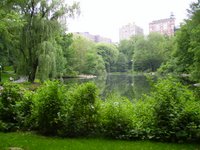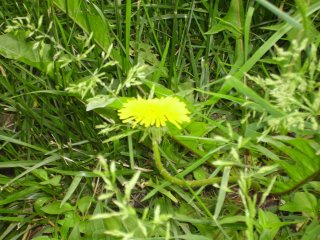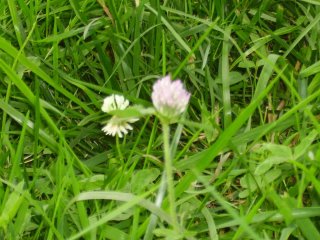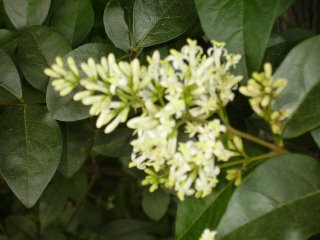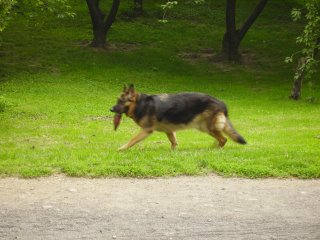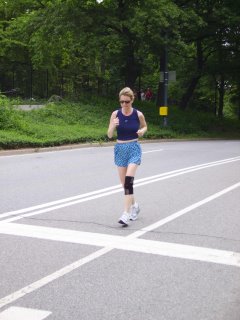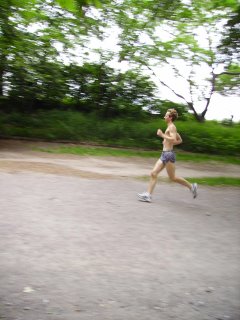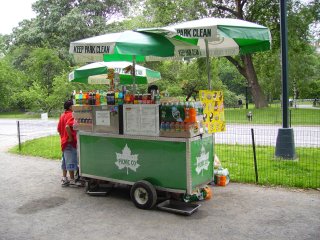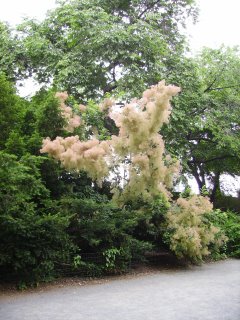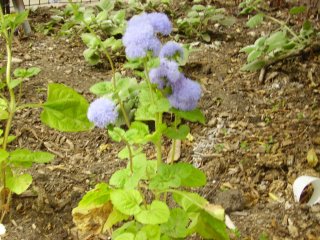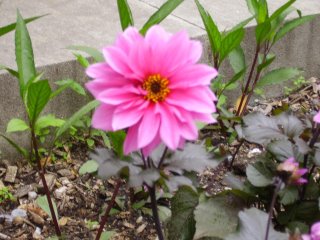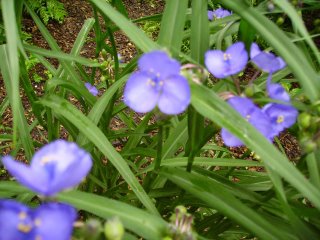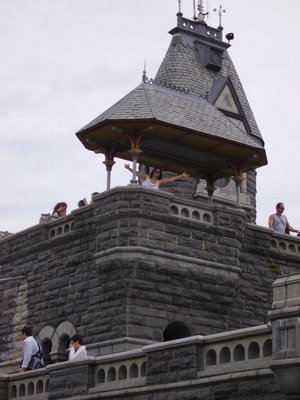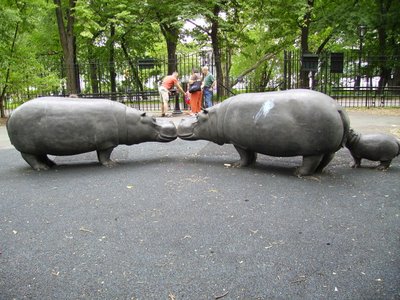The Amazing World of Lichen
I'm Lichen It!
So the Black Squirrel Diaries are back after a long, unexpected hiatus. This is due to a few important factors that started with two solid weeks of pouring rain in late June/early July, death and mayhem around the 4th, crashing the laptop while trying to update the anti-virus software around the middle of July, and then losing the cord to plug the camera into the laptop to download the pictures. All of this has given me new perspective and profound respect for the regularity of Robb and Lisa's blog entries, as well as the diversity of topics and the creativity and beauty of the photography.
This current posting to The Black Squirrel Diaries was inspired by this late June entry offered up on HowsRobb. I suggest you review that entry to refresh your memory -- Lisa described an exquisite day and included some startling pictures of the colorful lichen growing on the farm buildings and railings of the park they visited. It is worth re-reading just to enjoy that day again, but also to understand why lichen can be so galvanizing a topic.
On the Hunt
There are not many good sources of lichen in NYC. Lichen seems to prefer rotting wood or other organic matter in moist locations and we mostly have concrete here. There are some interesting molds that sometimes grow in the plaster walls of pre-war buildings though
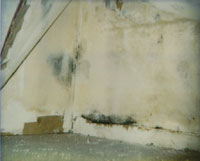
You can find molds like these in many buildings. Sometimes they grow behind your couch and you don't even know it, because really, when do you start moving your couch looking for mold? This one, luckily, is not in a building that I live in. Some molds can actually make you very sick, while others are simple allergens, and others just look nasty.
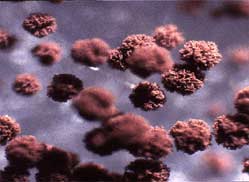
This is a close up of mold spores. I didn't take this picture (you can tell because A) you can actually see it and B) I do not have a microscopic zoom lens and C) I doubt I could work it if I did). Actually, I am finding that being an Urban Naturalist has some advantages as nothing is more natural than taking your laptop to Starbucks to download mold pictures for your blog.
If you want to learn about the diseases that are caused by mold or see pictures, you can click HERE. (I'm not sure that this is a particularly useful link to most people, but click HERE and you can see what's playing at the Loews 25 Megaplex in Times Square and even buy movie tickets)
Mold is not very photogenic, but it does stand still. Mold is not very useful either. Lichens, however, can be great. Below is a recipe I found for lichen soup. Please note that the Naturalist who created this soup is about as up on his Species Classifications as I am . . . and note the precaution about making sure you are using the right lichen!
Lichen Soup
from the staff at Camp Wannekita, Haliburton Ontario/Algonquin Provincial Park
 You need a couple of good handfuls of the greyish light green lichen (botanical name?) that grows on the rocks in northern ontario (Algonquin Park)
You need a couple of good handfuls of the greyish light green lichen (botanical name?) that grows on the rocks in northern ontario (Algonquin Park)
Directions
Place the rinsed clean lichen in a boiling pot of water (no drying or curing the plant necessary).
Boil for 15 minutes or so, strain and let cool a bit. Then you have your own fine and reputably nourishing wilderness brew!! Medicinal properties unknown...
Note: Taught to counsellors in training as part of survival lore [always be sure of plant identifications when gathering from the wild]
Urban Growth
In searching for Urban Lichen, I came across serveral of my favorite bits of Urban detritus:

I don't know the proper name, but I have always called them Gum Spots. When I was little, I thought they actually were blobs of gum, and they do stick to your shoe sometimes. But then I started to think about and couldn't figure why gum globs would be found all over some sections of pavement and not on others. And why were all of these people dropping all of this gum? It really makes no sense, but in my mind, they are Gum Spots.
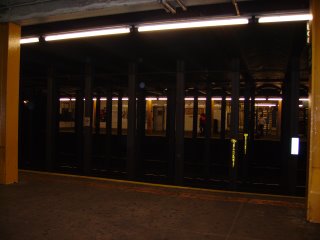
All of these Gum Spots are from the 8th Avenue subway platform at 23rd street (above). I saw these waiting for the C-train to take me home (not the famous A-train, but still plenty of G-spots to go around).
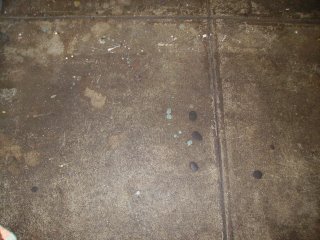
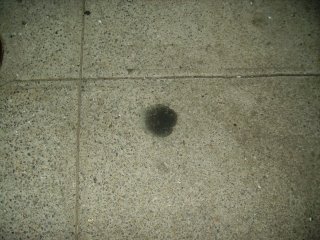
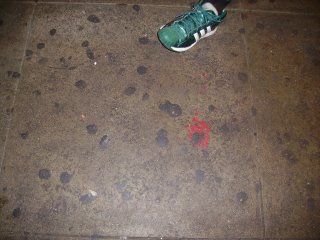
I don't know why that last one is pink, but sometimes there are colored Gum Spots that don't turn black.
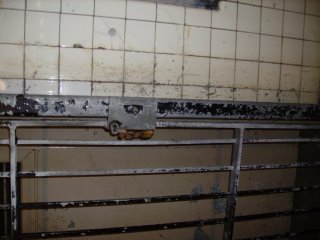
There is other ick that you can find in the subways, but unlike gum spots, I try not to look too closely at this stuff. It is more in the mold family that we learned about at the beginning of this blog post. But it is a living thing and it should be respected.
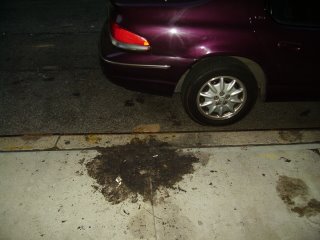
That spot is a really enormous one outside of my apartment building. I put the car tire in there so you could see it in comparison. Most are between quarter sized and silver dollar sized.

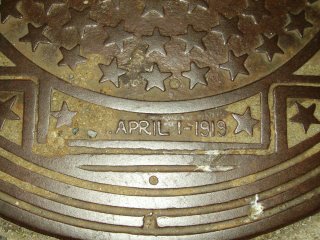
I noticed this on my sidewalk while I was taking Gum Spot pictures. This cool manhole cover is not for the sewer, but for the coal shoot. The date on cover is 1919 - most of the buildings along this side of Central Park were built in the late 1800s to early 1900s and used coal heat. I like that the cover is decorated in stars - the same style you might expect to find on the original Wonder Woman's uniform.

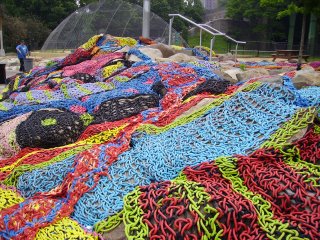
Now, this isn't lichen either, but it is a lot prettier then gum spots or mold. Sometimes I walk to work with my friend Richard and we take different routes. I live on 107th street next to central park, and I work at 26th street btwn 10th and 11th Aves, practically along the Hudson River.
It is about a five and a half mile walk, and sometimes we walk along riverside drive and riverside park. From there, you can take the river walk all the way down to battery park at the very bottom of Manhattan. There are bicycle and roller-blading paths next to walking paths. This is an art installation made of colored ropes and knots along the river walk. It's color and sprawl are a surprisingly refreshing contrast to the paved walkways, steel blue water and grey concrete bridges. It's sort of like man-made lichen, so I am including it here.


That's all for now! Maybe next week, we'll try back packing through Chinatown . . . ?
So the Black Squirrel Diaries are back after a long, unexpected hiatus. This is due to a few important factors that started with two solid weeks of pouring rain in late June/early July, death and mayhem around the 4th, crashing the laptop while trying to update the anti-virus software around the middle of July, and then losing the cord to plug the camera into the laptop to download the pictures. All of this has given me new perspective and profound respect for the regularity of Robb and Lisa's blog entries, as well as the diversity of topics and the creativity and beauty of the photography.
This current posting to The Black Squirrel Diaries was inspired by this late June entry offered up on HowsRobb. I suggest you review that entry to refresh your memory -- Lisa described an exquisite day and included some startling pictures of the colorful lichen growing on the farm buildings and railings of the park they visited. It is worth re-reading just to enjoy that day again, but also to understand why lichen can be so galvanizing a topic.
On the Hunt
There are not many good sources of lichen in NYC. Lichen seems to prefer rotting wood or other organic matter in moist locations and we mostly have concrete here. There are some interesting molds that sometimes grow in the plaster walls of pre-war buildings though

You can find molds like these in many buildings. Sometimes they grow behind your couch and you don't even know it, because really, when do you start moving your couch looking for mold? This one, luckily, is not in a building that I live in. Some molds can actually make you very sick, while others are simple allergens, and others just look nasty.

This is a close up of mold spores. I didn't take this picture (you can tell because A) you can actually see it and B) I do not have a microscopic zoom lens and C) I doubt I could work it if I did). Actually, I am finding that being an Urban Naturalist has some advantages as nothing is more natural than taking your laptop to Starbucks to download mold pictures for your blog.
If you want to learn about the diseases that are caused by mold or see pictures, you can click HERE. (I'm not sure that this is a particularly useful link to most people, but click HERE and you can see what's playing at the Loews 25 Megaplex in Times Square and even buy movie tickets)
Mold is not very photogenic, but it does stand still. Mold is not very useful either. Lichens, however, can be great. Below is a recipe I found for lichen soup. Please note that the Naturalist who created this soup is about as up on his Species Classifications as I am . . . and note the precaution about making sure you are using the right lichen!
Lichen Soup
from the staff at Camp Wannekita, Haliburton Ontario/Algonquin Provincial Park
 You need a couple of good handfuls of the greyish light green lichen (botanical name?) that grows on the rocks in northern ontario (Algonquin Park)
You need a couple of good handfuls of the greyish light green lichen (botanical name?) that grows on the rocks in northern ontario (Algonquin Park)Directions
Place the rinsed clean lichen in a boiling pot of water (no drying or curing the plant necessary).
Boil for 15 minutes or so, strain and let cool a bit. Then you have your own fine and reputably nourishing wilderness brew!! Medicinal properties unknown...
Note: Taught to counsellors in training as part of survival lore [always be sure of plant identifications when gathering from the wild]
Urban Growth
In searching for Urban Lichen, I came across serveral of my favorite bits of Urban detritus:

I don't know the proper name, but I have always called them Gum Spots. When I was little, I thought they actually were blobs of gum, and they do stick to your shoe sometimes. But then I started to think about and couldn't figure why gum globs would be found all over some sections of pavement and not on others. And why were all of these people dropping all of this gum? It really makes no sense, but in my mind, they are Gum Spots.

All of these Gum Spots are from the 8th Avenue subway platform at 23rd street (above). I saw these waiting for the C-train to take me home (not the famous A-train, but still plenty of G-spots to go around).



I don't know why that last one is pink, but sometimes there are colored Gum Spots that don't turn black.

There is other ick that you can find in the subways, but unlike gum spots, I try not to look too closely at this stuff. It is more in the mold family that we learned about at the beginning of this blog post. But it is a living thing and it should be respected.

That spot is a really enormous one outside of my apartment building. I put the car tire in there so you could see it in comparison. Most are between quarter sized and silver dollar sized.


I noticed this on my sidewalk while I was taking Gum Spot pictures. This cool manhole cover is not for the sewer, but for the coal shoot. The date on cover is 1919 - most of the buildings along this side of Central Park were built in the late 1800s to early 1900s and used coal heat. I like that the cover is decorated in stars - the same style you might expect to find on the original Wonder Woman's uniform.


Now, this isn't lichen either, but it is a lot prettier then gum spots or mold. Sometimes I walk to work with my friend Richard and we take different routes. I live on 107th street next to central park, and I work at 26th street btwn 10th and 11th Aves, practically along the Hudson River.
It is about a five and a half mile walk, and sometimes we walk along riverside drive and riverside park. From there, you can take the river walk all the way down to battery park at the very bottom of Manhattan. There are bicycle and roller-blading paths next to walking paths. This is an art installation made of colored ropes and knots along the river walk. It's color and sprawl are a surprisingly refreshing contrast to the paved walkways, steel blue water and grey concrete bridges. It's sort of like man-made lichen, so I am including it here.


That's all for now! Maybe next week, we'll try back packing through Chinatown . . . ?
